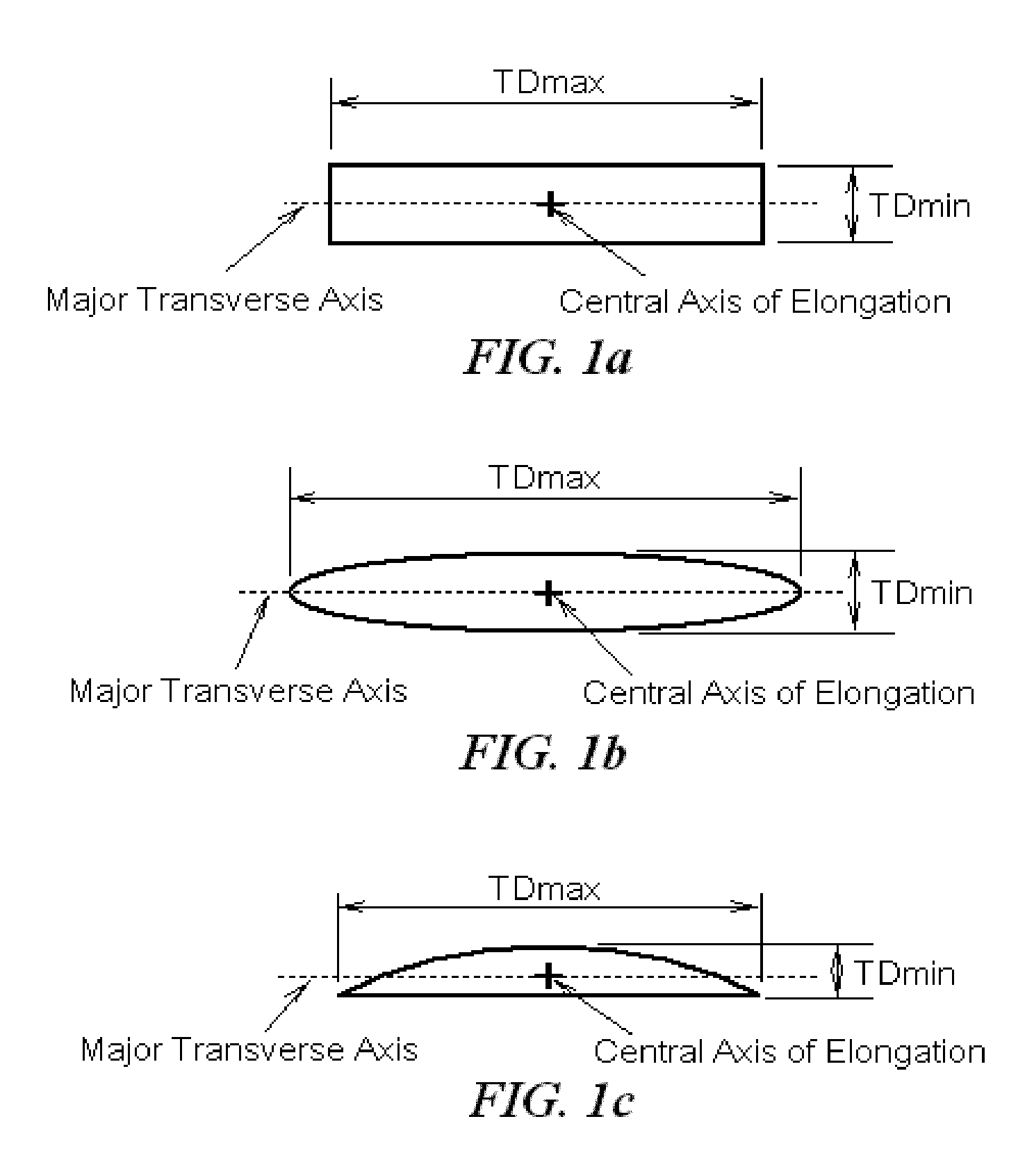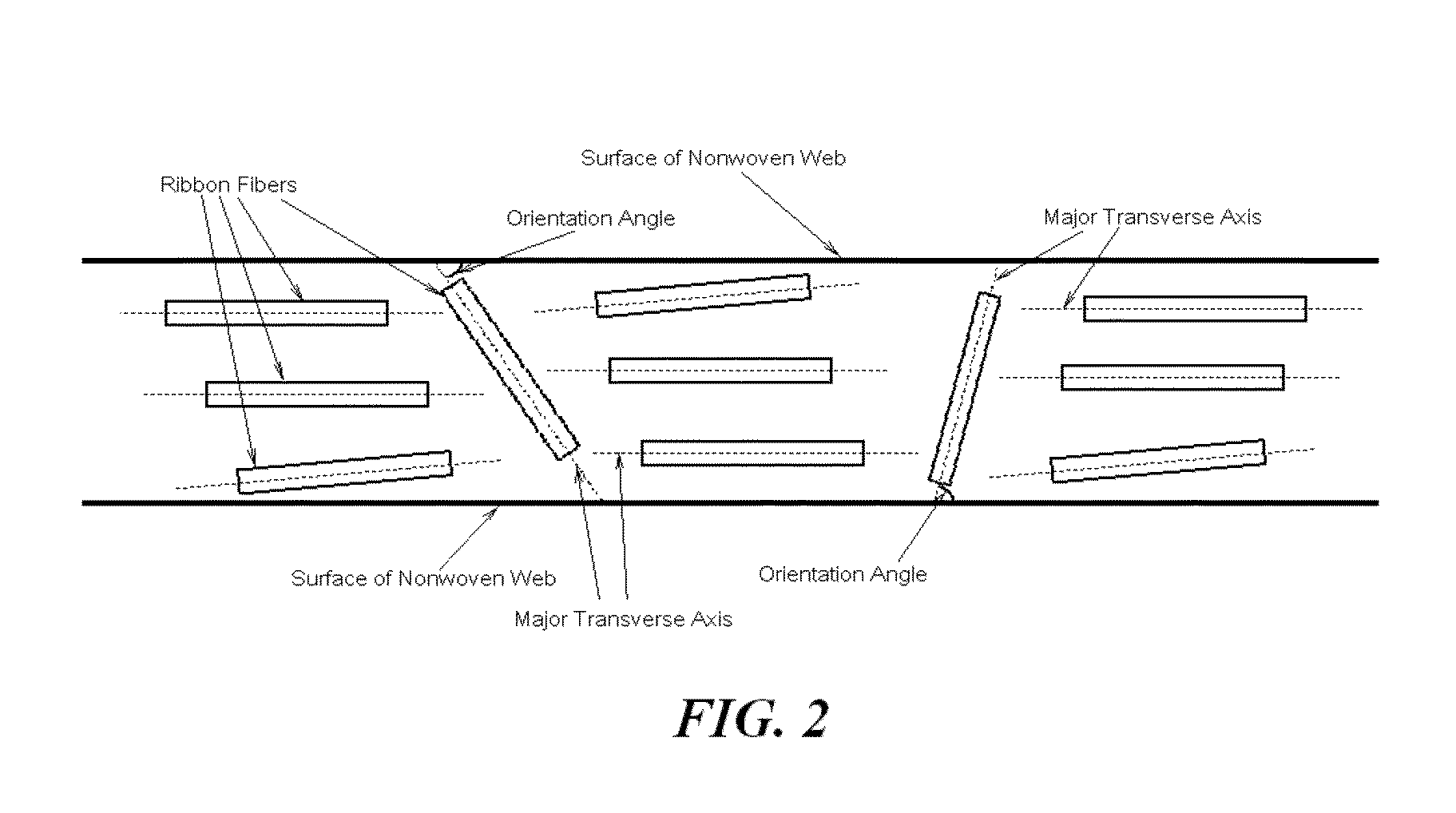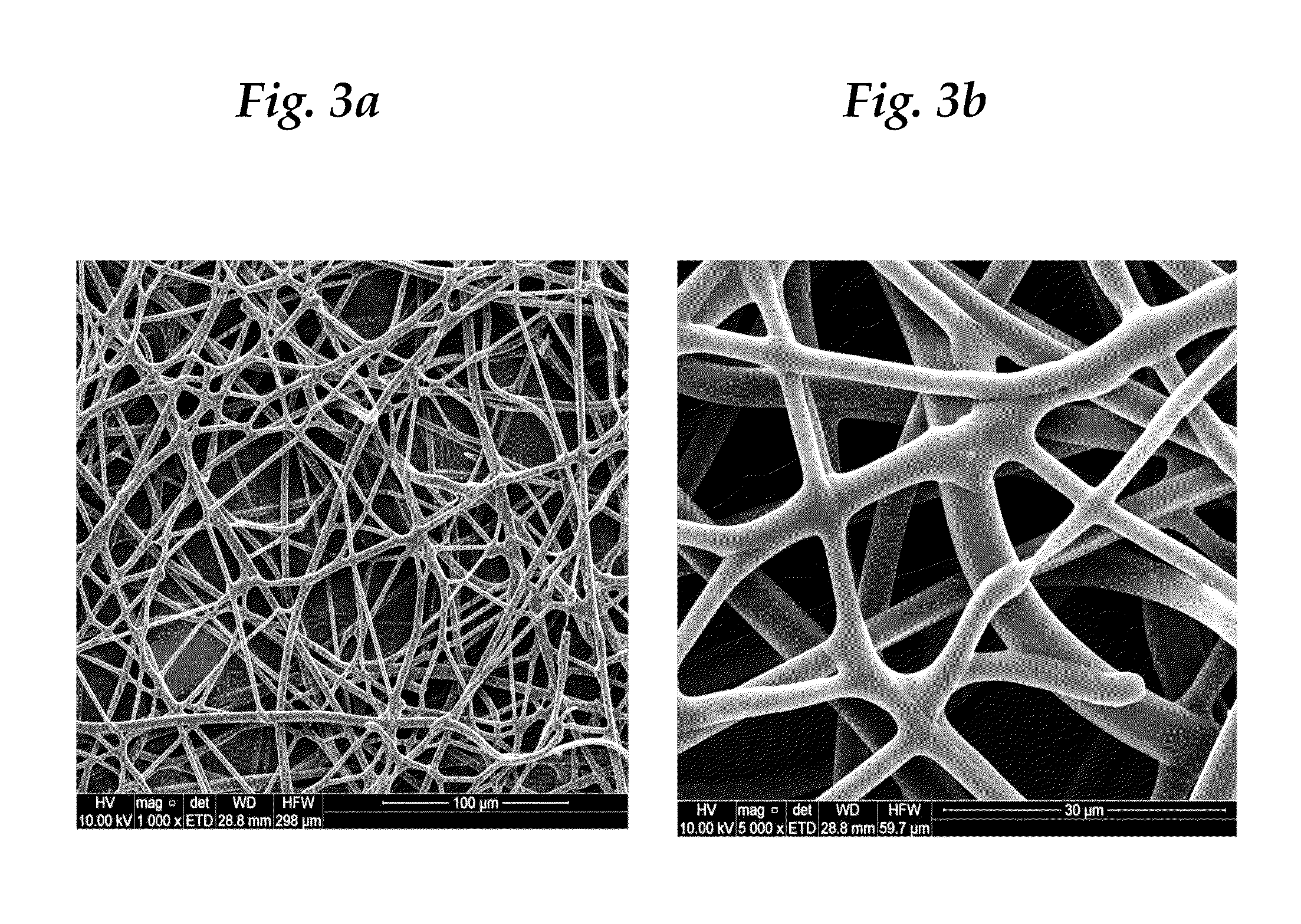Paper and nonwoven articles comprising synthetic microfiber binders
a technology of synthetic fibers and binders, which is applied in the field of synthetic fibers of paper and nonwoven articles, can solve the problems of high temperature drying, poor binder performance, and large size of current binder fibers, and achieves the effect of increasing the number of microns
- Summary
- Abstract
- Description
- Claims
- Application Information
AI Technical Summary
Benefits of technology
Problems solved by technology
Method used
Image
Examples
example 1
[0184]A sulfopolyester polymer was prepared with the following diacid and diol composition: diacid composition (69 mole percent terephthalic acid, 22.5 mole percent isophthalic 25 acid, and 8.5 mole percent 5-(sodiosulfo) isophthalic acid) and diol composition (65 mole percent ethylene glycol and 35 mole percent diethylene glycol). The sulfopolyester was prepared by high temperature polyesterification under a vacuum. The esterification conditions were controlled to produce a sulfopolyester having an inherent viscosity of about 0.33. The melt viscosity of this sulfopolyester was measured to be in the range of about 6000 to 7000 poise at 240° C. and 1 rad / sec shear rate.
example 2
[0185]The sulfopolyester polymer of Example 1 was spun into bicomponent islands-in-the-sea cross-section fibers using a bicomponent extrusion line. The primary extruder (A) fed Eastman F61 HC PET polyester to form the “islands” in the islands-in-the-sea cross-section structure. The secondary extruder (B) fed the water dispersible sulfopolyester polymer to form the “sea” in the islands-in-sea bicomponent fiber. The inherent viscosity of the polyester was 0.61 dL / g while the melt viscosity of the dry sulfopolyester was about 7,000 poise measured at 240° C. and 1 rad / sec strain rate using the melt viscosity measurement procedure described previously. The polymer ratio between “islands” polyester and “sea” sulfopolyester was 2.33 to 1. The filaments of the bicomponent fiber were then drawn in line using a set of two godet rolls to provide a filament draw ratio of about 3.3×, thus forming the drawn islands-in-sea bicomponent filaments with a nominal denier per filament of about 5.0. Thes...
example 3
[0186]The sulfopolyester polymer of Example 1 was spun into bicomponent islands-in-the-sea cross-section fibers using a bicomponent extrusion line. The primary extruder (A) fed Eastman F61 HC PET polyester to form the “islands” in the islands-in-the-sea cross-section structure. The secondary extruder (B) fed the water dispersible sulfopolyester polymer to form the “sea” in the islands-in-sea bicomponent fiber. The inherent viscosity of the polyester was 0.61 dL / g while the melt viscosity of the dry sulfopolyester was about 7,000 poise measured at 240° C. and 1 rad / sec strain rate using the melt viscosity measurement procedure described previously. The polymer ratio between “islands” polyester and “sea” sulfopolyester was 2.33 to 1. The filaments of the bicomponent fiber were then drawn in line using a set of two godet rolls to provide a filament draw ratio of about 3.3×. These filaments comprised the polyester microfiber islands having an average diameter of about 5.0 microns. The d...
PUM
 Login to View More
Login to View More Abstract
Description
Claims
Application Information
 Login to View More
Login to View More - R&D
- Intellectual Property
- Life Sciences
- Materials
- Tech Scout
- Unparalleled Data Quality
- Higher Quality Content
- 60% Fewer Hallucinations
Browse by: Latest US Patents, China's latest patents, Technical Efficacy Thesaurus, Application Domain, Technology Topic, Popular Technical Reports.
© 2025 PatSnap. All rights reserved.Legal|Privacy policy|Modern Slavery Act Transparency Statement|Sitemap|About US| Contact US: help@patsnap.com



